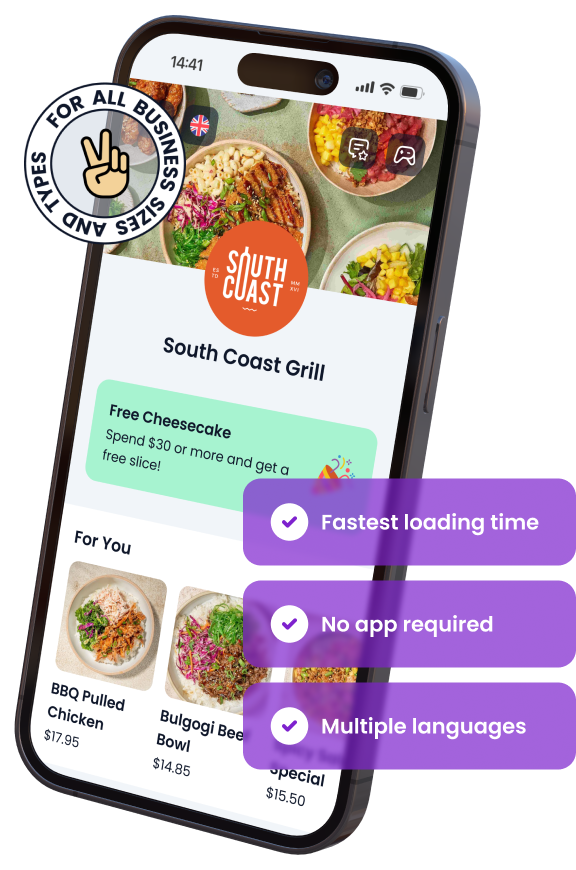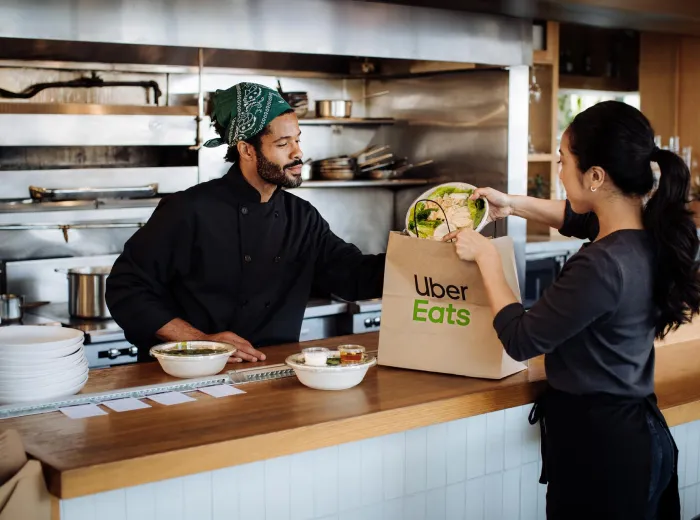

Opening a Restaurant in Johannesburg: 10 Mistakes Not to Make
Opening a restaurant in Johannesburg is an exciting yet challenging venture. As South Africa’s largest city and economic hub, Johannesburg offers a thriving food scene with a diverse customer base. However, the competition is fierce, and many new restaurants struggle to survive beyond their first year due to avoidable mistakes.
From securing the right location to managing costs and navigating licensing requirements, new restaurant owners face numerous challenges. Understanding these pitfalls in advance can save you time, money, and frustration. This guide will walk you through the 10 biggest mistakes to avoid when opening a restaurant in Johannesburg, helping you lay a strong foundation for success.
By the end of this article, you’ll have a clear roadmap to avoid costly missteps, attract the right customers, and ensure long-term profitability in Johannesburg’s dynamic restaurant industry.
Choosing the Wrong Location
The location of your restaurant can make or break your business. Johannesburg is a sprawling city with diverse neighborhoods, each attracting a different type of customer. A location that works for a high-end fine dining restaurant may not be ideal for a casual eatery or a fast-food outlet. Choosing the wrong spot can result in poor foot traffic, high operational costs, and a struggle to attract your target customers.
To avoid this mistake, consider these key factors when selecting a location:
- Customer demographics: Who are your ideal customers? Are they professionals, families, students, or tourists?
- Competition: Are there too many similar restaurants nearby? If so, what makes yours stand out?
- Accessibility: Can customers easily reach your restaurant by car, public transport, or on foot?
- Cost vs. revenue potential: Is the rent justified by the expected sales and customer demand?
Now, let’s break down the most critical location-related mistakes to avoid.
Not Researching Foot Traffic & Customer Demographics
One of the biggest mistakes restaurant owners make is failing to analyze foot traffic and customer behavior in their chosen area. Simply picking a busy street doesn’t guarantee success—what matters is whether those passing by are your ideal customers.
How to avoid this mistake:
- Spend time observing the area at different times of the day and week.
- Conduct surveys or interviews to understand the local clientele.
- Use tools like Google Maps, social media check-ins, and competitor reviews to gauge customer activity.
A location with steady foot traffic but the wrong type of customers (e.g., office workers near a fine-dining restaurant that only operates at night) can result in disappointing sales.
Ignoring Competition & Market Demand
Setting up your restaurant in an area with too many competitors offering the same cuisine or concept can lead to intense price wars and difficulty in standing out. On the other hand, choosing an area with little to no competition could indicate a lack of demand.
How to avoid this mistake:
- Analyze competing restaurants nearby—how are they performing? Are they consistently busy or struggling?
- Identify gaps in the market. For example, if an area is saturated with steakhouses but lacks vegetarian or vegan options, it might be an opportunity.
- Differentiate your restaurant by offering something unique—signature dishes, exceptional service, or a distinct ambiance.
Picking a location without researching market demand can lead to low customer turnout, forcing you to rethink your concept or relocate at a high cost.
Overlooking Accessibility & Parking Issues
Even the best restaurant concept can fail if customers find it difficult to reach your establishment. Limited parking, poor public transport access, or a hidden entrance can deter potential diners, especially in a city as traffic-heavy as Johannesburg.
How to avoid this mistake:
- Ensure your restaurant is easily visible from main roads and has clear signage.
- If parking is limited, explore partnerships with nearby lots or offer valet services.
- Consider whether ride-sharing and public transport options are convenient for your target audience.
A location that is hard to access or park near will frustrate customers, leading them to choose more convenient dining options instead.
By carefully selecting a location that aligns with your target market, stands out from competitors, and is easily accessible, you set your restaurant up for long-term success in Johannesburg’s competitive dining scene.
Failing to Obtain the Right Licenses & Permits
One of the most common mistakes new restaurant owners make in Johannesburg is underestimating the complexity of obtaining the necessary licenses and permits. Without the right approvals, you risk hefty fines, delays in opening, or even forced closure.
South African food service businesses are strictly regulated to ensure food safety, public health, and legal compliance. The process can be time-consuming, and missing even a single document can halt your operations. Below, we’ll break down the most critical licensing mistakes and how to avoid them.
Liquor License & Health Permits: What You Need
If your restaurant plans to serve alcohol, obtaining a liquor license is non-negotiable. However, many restaurant owners underestimate how long the process takes, leading to delays and lost revenue.
Essential permits and licenses:
- Liquor License: Required to sell alcohol; issued by the Gauteng Liquor Board. Processing can take several months.
- Health and Safety Certificate: Ensures your restaurant meets hygiene and safety standards.
- Food Business License: Mandatory for all food establishments; issued by the local municipality.
- Fire Safety Certificate: Confirms compliance with fire regulations.
- Music License (SAMRO): Needed if you play background music in your restaurant.
How to avoid this mistake:
- Start the liquor license application at least 6 months before opening.
- Schedule health and safety inspections early to avoid last-minute issues.
- Keep copies of all documents accessible in case of routine inspections.
Failure to obtain these permits can lead to legal action, fines, or an immediate shutdown.
Common Regulatory Mistakes That Delay Openings
Many restaurant owners assume they can start operating while waiting for approvals, but Johannesburg authorities strictly enforce compliance. Some of the most common mistakes include:
- Operating without a temporary permit: Some permits allow businesses to trade while waiting for final approval. Not securing one can lead to penalties.
- Ignoring zoning restrictions: Not all areas allow restaurants, and certain zones prohibit alcohol sales.
- Skipping inspections: Health and safety inspections are mandatory, and failing to pass can lead to delays in opening.
- Not renewing permits on time: Some licenses require annual renewal, such as health and liquor licenses.
How to stay compliant:
- Work with a legal consultant or business advisor who specializes in restaurant regulations.
- Set reminders for renewal deadlines to avoid unexpected shutdowns.
- Keep digital and physical copies of all licenses in case of spot checks.
Skipping these steps can result in costly legal battles and lost business opportunities.
Understanding Johannesburg’s Zoning Laws
Zoning laws determine what types of businesses can operate in specific areas. Some locations may restrict restaurant operations, late-night hours, or alcohol sales, leading to unexpected legal issues.
Common zoning restrictions for restaurants:
- Noise regulations: Restaurants with live music or outdoor seating may face complaints from residents.
- Operating hours: Some areas have curfews restricting late-night trading.
- Prohibited businesses: Certain zones prohibit restaurants altogether or require special consent.
How to avoid zoning issues:
- Check zoning laws before signing a lease to ensure your restaurant is compliant.
- Apply for rezoning or special consent if your business model doesn’t fit standard regulations.
- Consult with local authorities or town planners to clarify any restrictions.
Failing to comply with zoning laws can force you to relocate or shut down, resulting in massive financial losses.
Final Thoughts
Securing the right permits and licenses early on will save you time, money, and legal trouble. Johannesburg’s regulatory environment can be complex, but thorough planning and proactive compliance will help you avoid costly mistakes and open your restaurant without unnecessary delays.
Underestimating Startup Costs & Budgeting Poorly
One of the biggest reasons new restaurants in Johannesburg fail is a lack of financial planning. Many owners underestimate startup costs and run out of capital before the business becomes profitable. Additionally, poor budgeting leads to cash flow problems, forcing owners to cut corners, delay payments, or close their doors.
Before you open your restaurant, it’s crucial to understand the full cost of launching and running it. Below, we’ll explore the common budgeting mistakes restaurant owners make and how to avoid them.
How Much Does It Cost to Open a Restaurant in Johannesburg?
The cost of opening a restaurant in Johannesburg varies depending on location, size, and business model. However, many restaurant owners fail to calculate all expenses, leading to financial struggles.
Estimated startup costs for a small to mid-sized restaurant in Johannesburg:
- Lease deposit & rent: R50,000 – R150,000 (first few months)
- Renovation & interior design: R100,000 – R500,000
- Kitchen equipment & furniture: R150,000 – R500,000
- Licenses & permits: R10,000 – R50,000
- Inventory & initial food stock: R50,000 – R200,000
- Marketing & branding: R20,000 – R100,000
- Staff salaries (first few months): R100,000 – R300,000
- Technology & software (POS, reservations, security): R20,000 – R100,000
💡 Total estimated cost: Anywhere from R500,000 to R2 million, depending on your restaurant’s scale.
How to avoid this mistake:
- Get detailed quotes for major expenses before finalizing your budget.
- Create a buffer fund (at least 20% of your total budget) for unexpected costs.
- Use financial projections to estimate when your restaurant will become profitable.
Unexpected Expenses That Drain Your Cash Flow
Even after budgeting, many restaurant owners get caught off guard by hidden costs that quickly add up.
Common unexpected expenses:
- Delayed opening costs: Rent, utilities, and staff salaries must be paid even if your launch is delayed.
- Repairs & maintenance: Equipment breakdowns can cost thousands to fix.
- Marketing adjustments: Ads and promotions may require more budget than expected to attract customers.
- Supplier price increases: Inflation or supply chain disruptions can raise ingredient costs.
- Staff turnover & training: High employee turnover means constant hiring and training expenses.
How to avoid this mistake:
- Set aside at least 10-15% of your budget for unexpected expenses.
- Negotiate flexible payment terms with landlords and suppliers.
- Track cash flow weekly to spot financial problems early.
Running out of money in the first six months is a leading cause of restaurant failure—proper planning helps you avoid this trap.
Creating a Financial Plan That Ensures Profitability
Many restaurant owners focus on launching but don’t plan how to stay profitable. Without a detailed financial plan, your business may struggle to cover operating costs.
Steps to create a solid financial plan:
- Break down all costs: Include rent, utilities, payroll, and food costs.
- Set realistic sales projections: Estimate your daily and monthly revenue.
- Calculate your break-even point: Determine how long it will take to recover your startup costs.
- Control food and labor costs: Keep these below 65% of total revenue for profitability.
- Monitor key financial metrics: Track profit margins, cash flow, and cost percentages regularly.
💡 Example: If your monthly expenses are R200,000 and your average meal price is R150, you need to sell at least 1,333 meals per month to break even.
How to avoid this mistake:
- Work with an accountant or financial advisor to build a sustainable business model.
- Use restaurant management software to track expenses and profits in real time.
- Continuously adjust your budget based on actual performance.
Final Thoughts
A successful restaurant isn’t just about great food—it requires strong financial planning. By accurately estimating startup costs, preparing for unexpected expenses, and maintaining a well-structured budget, you increase your chances of long-term profitability in Johannesburg’s competitive dining scene.
Not Conducting a Proper Market Analysis
Many restaurant owners in Johannesburg jump into business without fully understanding their market. Without proper research, you risk launching a concept that doesn’t match local demand, pricing your menu incorrectly, or setting up in an area where competition is too strong.
A market analysis helps you understand:
- Who your ideal customers are.
- What competition exists in your area.
- What pricing and menu strategies work best.
- Whether your concept has real demand in Johannesburg.
Skipping this step can result in low foot traffic, slow sales, and an unsustainable business. Let’s explore the most critical market analysis mistakes and how to avoid them.
Why You Need to Understand Your Target Audience
A restaurant that tries to attract everyone often ends up appealing to no one. Many new owners fail to define their ideal customer, leading to mismatched marketing, pricing, and menu design.
Key factors to analyze about your target audience:
- Demographics: Age, gender, income level, and occupation.
- Eating habits: Do they prefer fine dining, casual meals, or fast food?
- Spending power: How much are they willing to pay for a meal?
- Dining preferences: Do they value convenience, ambiance, or unique experiences?
How to avoid this mistake:
- Conduct surveys in the area you plan to open.
- Check social media trends to see what local diners are talking about.
- Analyze customer behavior at competing restaurants.
💡 Example: If your target customers are office workers, they may prefer quick service, online ordering, and affordable lunch combos over a high-end dining experience.
Analyzing Competitor Strengths & Weaknesses
Many restaurant owners fail to research their direct and indirect competitors, which can lead to pricing mistakes, menu overlaps, and missed opportunities.
Steps to analyze competitors effectively:
- Identify top competitors within a 2-5 km radius.
- Study their menus: What’s selling well? What’s missing?
- Evaluate pricing strategies: Are they premium, mid-range, or budget-friendly?
- Check online reviews: What do customers love or complain about?
- Assess customer experience: Visit competitor restaurants and analyze service quality.
How to avoid this mistake:
- Offer something unique—whether it’s a signature dish, exceptional service, or a different dining experience.
- Price your menu competitively without undercutting profitability.
- Identify gaps in the market—for example, an area with many steakhouses but no vegan-friendly restaurants.
💡 Example: If your competitor is known for slow service, offering fast and efficient service could be your competitive edge.
Using Data to Validate Your Restaurant Concept
One of the biggest mistakes is launching a restaurant based on personal passion instead of market demand. Even if you love a certain cuisine, it may not attract enough customers in your chosen location.
How to validate your concept with data:
- Use Google Trends to check if there is rising demand for your cuisine in Johannesburg.
- Analyze food delivery trends to see what’s popular on Uber Eats and Mr D Food.
- Test your concept with pop-ups or small-scale events before committing to a full restaurant.
- Collect pre-launch feedback through social media polls and community engagement.
How to avoid this mistake:
- Validate your concept before investing large sums of money.
- Use real market data, not assumptions, to guide your decisions.
- Stay adaptable—adjust your menu or marketing based on customer preferences.
💡 Example: If research shows that locals prefer casual dining over fine dining in your area, it might be wise to adjust your concept to match demand.
Final Thoughts
A strong market analysis ensures that your restaurant aligns with local demand, avoids unnecessary competition, and positions itself for success. By understanding your target audience, analyzing competitors, and using data to validate your concept, you reduce the risk of failure and increase your chances of thriving in Johannesburg’s competitive food scene.
Hiring the Wrong Team & Neglecting Training
Your restaurant’s success depends on the people running it. Hiring the wrong staff or failing to invest in training can lead to poor customer service, high turnover, and operational chaos. Many restaurant owners in Johannesburg rush through the hiring process, focusing only on immediate needs rather than building a strong team culture.
To create a restaurant that runs smoothly and keeps customers coming back, you need to hire the right employees, train them properly, and foster a positive work environment. Let’s look at the most common staffing mistakes and how to avoid them.
Common Hiring Mistakes That Lead to High Turnover
Many restaurant owners hire too quickly without assessing whether candidates truly fit the role. This results in frequent resignations, poor service, and wasted training costs.
Mistakes to avoid:
- Hiring underqualified staff just to fill positions quickly.
- Ignoring personality and attitude—skills can be taught, but attitude is harder to change.
- Failing to check references, leading to unreliable hires.
- Underpaying staff, causing them to leave for better opportunities.
- Not defining clear roles, which creates confusion in daily operations.
How to hire the right team:
✔ Clearly define job descriptions for each role (chefs, servers, baristas, managers).
✔ Use practical interviews—test skills for chefs and baristas before hiring.
✔ Check past experience and references to verify reliability.
✔ Offer competitive salaries to attract and retain top talent.
✔ Look for attitude and teamwork skills, not just technical ability.
💡 Example: A highly skilled chef with a bad attitude can ruin team morale. Sometimes, it’s better to hire a less experienced chef with a strong work ethic and train them.
How to Train Staff for Superior Customer Service
Even if you hire the right team, failing to properly train them will lead to inconsistent service and customer complaints. Many restaurant owners assume staff will “learn on the job,” but structured training ensures higher efficiency and professionalism.
Key areas of training:
- Customer interaction: How to greet guests, take orders, and handle complaints.
- Food knowledge: Staff should understand ingredients, allergens, and pairings.
- Speed and efficiency: Training in order-taking, food delivery, and clearing tables.
- Upselling techniques: Teaching staff how to recommend add-ons without being pushy.
- POS system training: Ensuring staff can handle orders and payments smoothly.
How to avoid poor training:
- Develop a structured onboarding program for new hires.
- Use role-playing exercises to prepare staff for real customer scenarios.
- Provide ongoing training sessions—especially for menu updates and service improvements.
- Monitor staff performance and give feedback regularly.
💡 Example: Staff who know how to upsell effectively (e.g., suggesting wine pairings) can increase average bill sizes, boosting your revenue.
Importance of a Strong Management Team
Your management team sets the tone for your restaurant’s success. Without strong leadership, even well-trained staff may struggle with communication, accountability, and consistency. Many restaurant owners micromanage everything or, on the flip side, fail to oversee daily operations effectively.
Key roles of a strong management team:
- General Manager: Oversees overall operations, staffing, and finances.
- Head Chef/Kitchen Manager: Ensures food quality, kitchen efficiency, and cost control.
- Front-of-House Manager: Focuses on customer service and staff performance.
- Marketing Manager (optional): Handles promotions, social media, and brand visibility.
How to avoid weak management:
✔ Hire managers with restaurant experience and leadership skills.
✔ Set clear expectations with KPIs (Key Performance Indicators).
✔ Conduct regular team meetings to align goals and address issues.
✔ Empower managers to handle operations without micromanagement.
💡 Example: A strong manager can reduce staff turnover by creating a positive work environment and resolving conflicts before they escalate.
Final Thoughts
A restaurant is only as good as its team. By hiring the right staff, investing in proper training, and building a strong management structure, you create a well-run business that delivers exceptional service and consistent quality. A great team doesn’t just keep your restaurant running—it ensures customers return and recommend your place to others.
Ignoring Marketing & Online Presence
Many restaurant owners in Johannesburg focus on operations and food quality but neglect marketing and their online presence. In today’s digital era, having great food is not enough—you need to actively promote your restaurant to attract customers.
With intense competition in the food industry, a strong marketing strategy helps you:
✔ Increase brand awareness and foot traffic.
✔ Build an engaged customer base.
✔ Get more online orders and reservations.
✔ Stand out from competitors.
Failing to market your restaurant results in low visibility, empty tables, and slow business growth. Below are the key marketing mistakes to avoid and how to fix them.
Why You Need a Strong Digital Marketing Strategy
Johannesburg’s diners search for restaurants online before visiting. If your restaurant lacks an online presence, potential customers will choose competitors who actively market themselves.
Common digital marketing mistakes:
❌ Not having a website or social media presence.
❌ Ignoring Google Business Profile, making it hard for customers to find your location.
❌ Posting low-quality photos of food and ambiance.
❌ Failing to engage with followers on social media.
How to fix this:
✔ Create a Google Business Profile with updated contact details, photos, and reviews.
✔ Build a professional website with your menu, booking options, and online ordering.
✔ Use Facebook & Instagram to share promotions, food photos, and customer experiences.
✔ Run targeted ads to reach local customers.
💡 Example: A Johannesburg steakhouse saw a 30% increase in reservations after optimizing their Google Business listing with professional photos and customer responses.
Social Media & SEO for Local Visibility
Your restaurant needs to be easy to find online when people search for places to eat in Johannesburg. Social media and Search Engine Optimization (SEO) help drive local traffic.
Social media best practices:
✔ Post high-quality food and ambiance photos regularly.
✔ Use local hashtags like #JoburgFoodie and #JohannesburgEats.
✔ Share behind-the-scenes content to build a personal connection.
✔ Offer exclusive social media discounts to attract new followers.
SEO tips for restaurants:
- Use Google-friendly keywords like “best pizza in Johannesburg” on your website.
- Add your restaurant location to page titles and descriptions.
- Optimize your menu for search engines (e.g., “authentic Italian pasta in Sandton”).
- Encourage customer reviews, which boost your Google ranking.
💡 Example: A café that added “best brunch in Johannesburg” to their website saw a 40% increase in Google searches and more walk-in customers.
How to Use Food Delivery Apps & Online Reviews to Your Advantage
Online food delivery is booming in Johannesburg, and many customers check reviews before ordering or visiting a restaurant. If you ignore these platforms, you miss out on significant revenue.
Food delivery mistakes to avoid:
❌ Not partnering with Uber Eats, Mr D Food, or Bolt Food.
❌ Having an outdated or incomplete menu on delivery apps.
❌ Ignoring negative reviews, which damages your reputation.
How to maximize delivery apps:
✔ Offer exclusive online-only deals to attract more orders.
✔ Keep your menu updated with pricing, descriptions, and photos.
✔ Monitor customer feedback and improve based on reviews.
Handling online reviews:
- Respond to every review, positive or negative, to show engagement.
- Apologize and offer solutions for negative feedback.
- Encourage happy customers to leave reviews on Google and Facebook.
💡 Example: A Johannesburg burger joint that actively responded to reviews saw a 20% increase in positive ratings within 3 months.
Final Thoughts
Ignoring marketing is a costly mistake. Your restaurant needs an online presence to compete in Johannesburg’s food scene. By leveraging social media, SEO, and food delivery apps, you can increase visibility, attract more customers, and grow your restaurant faster. A great marketing strategy keeps your tables full and your revenue high.
Poor Menu Planning & Pricing Strategies
A well-designed menu is one of the most powerful tools for a restaurant’s success. Yet, many restaurant owners in Johannesburg fail to optimize their menus, leading to low sales, high costs, and customer dissatisfaction.
Your menu should be:
✔ Profitable – ensuring high margins on each dish.
✔ Appealing – attracting repeat customers.
✔ Balanced – offering variety without overwhelming diners.
Making mistakes in menu design and pricing can lead to financial struggles. Let’s explore the key pitfalls and how to avoid them.
How to Design a Profitable & Appealing Menu
Many restaurant owners overcomplicate their menus with too many options, confusing customers and increasing food waste. A clear, focused menu leads to higher sales and better operations.
Common menu design mistakes:
❌ Offering too many dishes, making it harder for customers to decide.
❌ Ignoring ingredient overlap, leading to high stock waste.
❌ Not categorizing items logically, making it difficult for customers to navigate.
❌ Using uninspiring menu descriptions that don’t entice customers.
How to fix this:
✔ Limit menu options to 20-30 well-curated dishes.
✔ Use ingredient cross-utilization to minimize waste.
✔ Highlight best-selling and high-margin items visually.
✔ Use descriptive language to make dishes more appealing.
💡 Example: Instead of “Grilled Chicken”, write “Juicy Flame-Grilled Chicken with Lemon Herb Glaze” to create a stronger emotional appeal.
Pricing Mistakes That Kill Restaurant Profitability
Incorrect pricing is a common reason restaurants fail. Many owners either underprice and lose profit or overprice and lose customers.
Biggest pricing mistakes:
- Not calculating food cost percentages, leading to losses.
- Guessing prices instead of using data-driven pricing.
- Not adjusting prices regularly to account for inflation and supplier cost increases.
- Not considering portion sizes, resulting in waste or unhappy customers.
How to set profitable menu prices:
- Calculate food cost percentage:
- Target 25-35% of the menu price for food costs.
- Example: If a dish costs R50 to make, price it at R150-R200.
- Use psychological pricing:
- Price items at R99 instead of R100 to increase perceived value.
- Offer bundled deals to boost spending.
- Monitor competitors’ pricing:
- Stay competitive while maintaining profitability.
💡 Example: A Johannesburg bistro increased its revenue by 15% by adjusting portion sizes and pricing according to food costs.
Balancing Food Cost & Customer Expectations
Many restaurants struggle to balance food costs with customer expectations. Pricing too high scares customers away, while pricing too low hurts profits.
How to strike the right balance:
- Offer different portion sizes (e.g., small and large plates).
- Introduce combo meals to increase perceived value.
- Reduce menu waste by analyzing which items aren’t selling well.
- Adjust the menu seasonally to take advantage of lower-cost ingredients.
💡 Example: A steakhouse in Johannesburg started offering “half portions” for a lower price, which increased customer satisfaction and boosted overall sales.
Final Thoughts
A well-planned menu drives profitability and enhances the customer experience. By keeping your menu focused, pricing dishes correctly, and balancing food costs with customer expectations, you set your restaurant up for long-term success in Johannesburg’s competitive dining scene.
Neglecting Customer Experience & Service Quality
A restaurant’s success isn’t just about food—it’s about the entire dining experience. Even with a great menu and prime location, poor service can drive customers away. Many restaurant owners in Johannesburg focus too much on operations and profitability while neglecting customer satisfaction, which ultimately determines long-term success.
A great customer experience leads to:
✔ Repeat business – happy customers return and bring friends.
✔ Higher spending – customers tip more and order extra items.
✔ Positive online reviews – crucial for attracting new diners.
Ignoring customer experience and service quality can quickly damage your reputation and hurt profits. Below are the most common mistakes and how to avoid them.
Why Customer Service Is More Important Than Food
Even the best meal can’t save a bad service experience. Poor service leads to negative reviews, fewer repeat customers, and lost revenue.
Common service mistakes:
❌ Slow or inattentive staff.
❌ Rude or untrained employees.
❌ Long wait times for food and drinks.
❌ Orders arriving incorrect or late.
How to improve customer service:
✔ Train staff to be friendly, attentive, and professional.
✔ Use clear communication—confirm orders to avoid mistakes.
✔ Reduce wait times with efficient kitchen and serving processes.
✔ Implement customer feedback surveys to identify issues.
💡 Example: A Johannesburg restaurant that trained its staff in greeting customers warmly and handling complaints professionally saw a 20% increase in repeat business.
How to Handle Complaints & Negative Reviews
Every restaurant receives complaints, but how you handle them determines whether a customer returns or leaves permanently. Many restaurant owners either ignore complaints or respond defensively, which worsens the problem.
Best practices for handling complaints:
- Listen actively – let customers explain their issue without interruption.
- Apologize sincerely – even if the mistake wasn’t intentional.
- Offer a solution – a free drink, discount, or quick correction.
- Follow up – ensure the customer leaves satisfied.
Managing online reviews:
✔ Respond to every review—both positive and negative.
✔ Thank customers for good reviews to encourage repeat visits.
✔ Address complaints professionally and offer to make things right.
💡 Example: A restaurant in Johannesburg that started responding professionally to bad reviews saw a 30% improvement in its overall rating on Google and TripAdvisor.
Creating a Loyalty Program to Retain Customers
Attracting new customers is expensive, but keeping existing ones is much more profitable. A well-designed loyalty program encourages repeat visits and increases customer lifetime value.
Popular restaurant loyalty strategies:
- Point-based rewards – earn points for each visit and redeem them for discounts.
- Referral programs – give discounts for bringing in new customers.
- Exclusive VIP perks – early access to new menu items or special events.
- Birthday discounts – a simple but effective way to encourage repeat business.
How to implement a loyalty program:
✔ Use digital platforms like Menuviel to track points and rewards.
✔ Offer easy sign-up options (QR codes, mobile apps, or website links).
✔ Promote the program on social media, receipts, and your website.
💡 Example: A café in Johannesburg introduced a buy 5, get 1 free coffee program and saw a 25% increase in customer retention within six months.
Final Thoughts
Customer experience and service quality are critical to a restaurant’s success. By training staff, handling complaints professionally, and implementing a loyalty program, you can turn first-time visitors into long-term customers. Happy customers spend more, return frequently, and recommend your restaurant to others, ensuring steady growth and profitability.
Mismanaging Inventory & Food Costs
Inventory and food costs can make or break a restaurant’s profitability. Many restaurant owners in Johannesburg fail to properly track stock, control portion sizes, or negotiate better supplier deals, leading to waste, lost profits, and cash flow problems.
A well-managed inventory system ensures:
✔ Less food waste, saving money.
✔ Better cost control, increasing profit margins.
✔ Consistent quality, improving customer satisfaction.
Failing to manage inventory properly can result in high expenses, supply shortages, and operational inefficiencies. Below are the key mistakes to avoid and best practices to follow.
Inventory Mistakes That Lead to Waste & Loss
Poor inventory management is a silent profit killer. Many restaurant owners buy in bulk without tracking stock usage, leading to expired ingredients, unnecessary waste, and cash tied up in excess inventory.
Common inventory mistakes:
❌ Overordering perishables, leading to spoilage.
❌ Not tracking stock levels, resulting in unexpected shortages.
❌ Poor storage practices, causing contamination or loss.
❌ No system to monitor theft or employee misuse.
How to improve inventory control:
✔ Use a First-In, First-Out (FIFO) method to prevent spoilage.
✔ Track stock daily or weekly using inventory management software.
✔ Store ingredients properly to extend shelf life.
✔ Assign a manager to oversee stock control and reduce losses.
💡 Example: A Johannesburg restaurant reduced food waste by 30% by implementing a weekly stock check system and ordering only what was needed based on customer demand.
How to Control Food Costs & Boost Profit Margins
Food costs should be around 25-35% of menu prices. If they exceed this, profitability drops significantly. Many restaurants struggle because they don’t monitor food costs regularly or fail to adjust menu pricing based on ingredient costs.
Key factors affecting food costs:
- Fluctuating supplier prices – costs change, but menu prices remain static.
- Portion inconsistencies – staff serve too much or too little, reducing profits.
- Lack of waste tracking – no system to measure losses from overproduction.
How to keep food costs under control:
✔ Calculate cost per dish and adjust pricing accordingly.
✔ Train staff on proper portioning to minimize waste.
✔ Build relationships with multiple suppliers to get the best deals.
✔ Regularly review menu performance and remove low-margin items.
💡 Example: A Johannesburg steakhouse lowered food costs by 12% by switching to a seasonal menu, allowing them to use cheaper, locally available ingredients.
Best Inventory Management Tools for Restaurants
Manual tracking leads to errors, inefficiency, and losses. Using technology can streamline inventory control, cost calculations, and ordering processes.
Top inventory management tools:
📌 MarketMan – Tracks food costs, supplier prices, and waste reduction.
📌 Toast POS – Integrates sales with inventory to prevent stock shortages.
📌 Lightspeed Restaurant – Helps control portion sizes and manage recipes.
📌 KitchenCUT – Ideal for tracking ingredient usage and minimizing waste.
How to integrate inventory software effectively:
✔ Choose a system that integrates with your POS (Point of Sale) system.
✔ Train staff to input stock levels correctly.
✔ Use automated alerts for low-stock items to avoid shortages.
✔ Analyze weekly reports to identify trends and reduce waste.
💡 Example: A Johannesburg café using Lightspeed POS reduced monthly food waste by 15%, saving thousands in unnecessary purchases.
Final Thoughts
Inventory mismanagement and uncontrolled food costs can destroy a restaurant’s profitability. By tracking inventory properly, controlling portion sizes, and using technology, you can cut waste, improve efficiency, and increase profit margins. Managing food costs is not just about saving money—it’s about creating a sustainable, profitable business in Johannesburg’s competitive restaurant industry.
Lack of a Long-Term Growth Strategy
Many restaurant owners in Johannesburg focus solely on opening day but fail to plan for sustained success. Without a long-term growth strategy, even a restaurant that starts strong can struggle after the initial excitement fades.
A solid growth plan ensures:
✔ Consistent revenue growth beyond the first year.
✔ Scalability, allowing for expansion and higher profits.
✔ Adaptability, keeping your business relevant in a changing market.
Ignoring long-term planning leads to stagnation, financial struggles, and eventual closure. Below, we’ll explore key mistakes and strategies for sustainable restaurant growth.
Why Restaurants Fail & How to Avoid It
Many restaurants in Johannesburg close within the first three years due to:
❌ Poor financial management.
❌ No clear strategy for customer retention.
❌ Failure to adapt to industry trends.
❌ Over-reliance on initial hype without long-term planning.
How to prevent failure:
✔ Monitor cash flow and profitability monthly.
✔ Develop a loyalty program to keep customers coming back.
✔ Stay flexible—adjust menus and marketing strategies as needed.
✔ Build a strong brand presence through consistent marketing and community engagement.
💡 Example: A Johannesburg bistro that started tracking monthly financials and customer retention rates saw a 15% increase in repeat business within a year.
Scaling Your Restaurant for Future Expansion
A successful restaurant should have a growth roadmap. Whether you want to open a second location, start a franchise, or expand delivery services, scaling requires careful planning.
Growth strategies for restaurants:
- Multi-location expansion: Open in new neighborhoods based on market demand.
- Cloud kitchens & delivery-only brands: Tap into the growing food delivery trend.
- Catering & event hosting: Increase revenue streams with private bookings.
- Franchising: If your concept is successful, consider licensing it to others.
How to scale effectively:
✔ Ensure profitability in your first location before expanding.
✔ Analyze customer demand before choosing a new market.
✔ Secure funding through investors or business loans.
✔ Create operational systems that make expansion smoother (standardized recipes, training manuals, etc.).
💡 Example: A Johannesburg pizza restaurant increased revenue by 30% after launching a delivery-only brand that required no extra dining space.
Keeping Up with Market Trends & Customer Preferences
Restaurants that fail to evolve often lose customers to competitors who stay ahead of trends. A long-term strategy must include regular market research to adapt to changing preferences.
Emerging restaurant trends in Johannesburg:
📌 Sustainability & eco-friendly dining – Customers prefer locally sourced, organic options.
📌 Plant-based and healthy eating – Vegan and gluten-free menus are in demand.
📌 Tech integration – Digital menus, QR codes, and mobile payments improve convenience.
📌 Unique dining experiences – Themed nights, live entertainment, and interactive food concepts attract new customers.
How to stay ahead of the curve:
✔ Monitor social media trends and customer reviews.
✔ Experiment with seasonal menus to keep offerings fresh.
✔ Gather customer feedback regularly to identify opportunities.
✔ Attend food industry events and network with other restaurateurs.
💡 Example: A Johannesburg café that introduced vegan and gluten-free options saw a 25% increase in health-conscious customers.
Final Thoughts
A restaurant’s long-term success depends on strategic growth planning. By avoiding common pitfalls, scaling wisely, and staying in tune with market trends, you can ensure sustained profitability and customer loyalty. A well-planned restaurant doesn’t just survive—it thrives.
Key Takeaways
Opening a restaurant in Johannesburg is an exciting but challenging venture. Avoiding common mistakes can save you time, money, and frustration while increasing your chances of long-term success. Here are the most critical lessons from this guide:
✔ Choose the right location – Research foot traffic, customer demographics, and competition before signing a lease.
✔ Secure all necessary permits and licenses – Plan ahead to avoid legal issues and delays in opening.
✔ Budget wisely – Account for all startup costs, prepare for unexpected expenses, and track your cash flow.
✔ Conduct proper market research – Understand your target audience and competitors to position your restaurant for success.
✔ Hire and train a great team – Invest in staff training to improve service quality and customer satisfaction.
✔ Prioritize marketing and online presence – Leverage social media, SEO, and food delivery apps to attract and retain customers.
✔ Optimize your menu and pricing – Design a profitable, customer-friendly menu and ensure food costs stay within profitable margins.
✔ Deliver an outstanding customer experience – Provide exceptional service, handle complaints professionally, and build customer loyalty.
✔ Manage inventory and food costs efficiently – Reduce waste, control portion sizes, and use technology for better stock management.
✔ Plan for long-term growth – Stay ahead of trends, scale strategically, and continuously improve operations.
By avoiding these common mistakes and implementing these best practices, you’ll set your restaurant up for long-term success in Johannesburg’s dynamic and competitive dining industry.
Frequently Asked Questions on Opening a Restaurant in Johannesburg
Below are five SEO‑optimized questions and answers designed to anticipate what aspiring restaurateurs in Johannesburg are most likely to search for—and help your blog post rank better on Google.
How long does it take to secure a liquor license in Johannesburg?
Securing a liquor license in Johannesburg can take several months due to the complexity of requirements from the Gauteng Liquor Board. It’s wise to begin the application process at least six months before your intended opening date to avoid costly delays.
What are the typical startup costs for launching a restaurant in Johannesburg?
Startup costs can vary widely depending on your concept, size, and location. For a small‑to‑mid‑sized restaurant, estimate around R500,000 to R2 million, covering rent, renovations, kitchen setup, initial inventory, staff salaries, marketing, software, and licensing. Always build in at least a 20 % buffer for unexpected expenses.
How can I choose the best location for my Johannesburg restaurant?
Selecting the right location means matching your concept with local foot traffic, customer demographics, and competition. Look beyond busy streets: observe the type of passersby, assess competitor performance, study accessibility (parking, public transport), and balance rent cost against realistic revenue potential.
How important is online visibility and marketing for a new restaurant in Johannesburg?
Crucial. In today’s digital-first era, restaurants must prioritize an online presence: set up a Google Business Profile with photos and descriptions, maintain active social media using local hashtags (e.g. #JohannesburgEats), partner with delivery apps like Uber Eats or Mr D Food, and manage online reviews. A visible online presence drives foot traffic, online orders, and bookings.
What strategies help control food costs and manage inventory effectively?
Use strategies like FIFO (first‑in, first‑out) for perishables, regular stock tracking via inventory software, consistent portion control, and ingredient cross‑utilization to reduce waste and cost. Aim for food cost margins of 25–35 % of menu price, and adapt menus seasonally or remove low‑margin items as needed.
ABOUT THE AUTHOR
Erkin Coban
Your Customers Deserve The Best
And we got Menuviel for them.
The fastest and easy-to-use online QR menu with 12+ unique features. Choose Menuviel and elevate your service quality to the next level.
Use free for the first 30 days.

In This Article

Free AI Tools for Restaurants
TRY NOW ➜

Enjoy discounted prices for South Africa
We adjust our subscription price for South Africa, so you enjoy all the same great features at a lower, more affordable rate.





